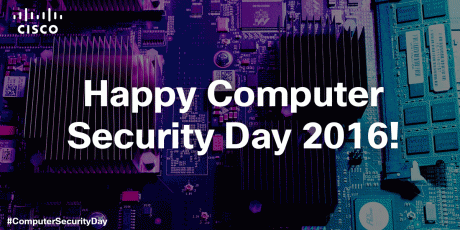
On this day…
On this day…
2016 has been quite the year. In fact, if you’re taking part in a pub quiz in 20 years’ time and you’re not sure on the answer, just put ‘2016’. Odds are, that’s when it happened…
So, with it being ‘Computer Security Day’ I thought I’d take a look back at this very day (30th November) during key moments in history, and take you on an explorative journey of IT Security through the years. It’s like Attenborough, with less giraffes. And fewer eye popping visuals. And a distinct lack of compelling commentary.
Ok, it’s nothing like Attenborough. That was always going to be a stretch.
I’ve been fascinated with the topic of IT Security for years, and in the past year, nay, the past few months, I’ve never seen it more entrenched in the media, and in everyday business conversations. That’s both a great thing, and a not so great thing.
The reason we’re talking about it more, is because we have to. Hackers have gone pro. They’re making a lot of money from their schemes, and re-investing the profits into tools that make cyber attacks more widespread, and pack bigger punches. Ransomware alone, (aka the worst computer malware we’ve ever seen), has risen by 350% this year. It’s shortly predicted to be a $1 billion industry.
The stance now has to be, “Assume we’re going to get breached. What can we do to minimalise our risk?”
So, how did we find ourselves here?
30th November, 1814
The beginning of the 19th Century saw a big technology breakthrough as The Times of London was, for the first time, printed by automatic, steam powered presses – making newspapers available to a mass audience.
In the absence of computers, we had lots of physical stuff to protect, so we liked the idea of vaults. A lot. From banks to casinos to overly paranoid civilians; we believed that the thicker the steel, the better.
30th November, 1872
The first ever international football match took place: England vs. Scotland. This enthralling spectacle, witnessed by 4000 people, had everything in it – last minute injuries, a delayed start, a waterlogged pitch…oh, except for the goals. A 0-0 classic.
In the meantime, we were seeing some of the first incarnations of modern encryption techniques. Codemaking was becoming increasingly popular amongst countries with secrets to hide; and therefore codebreaking became just as prevalent by the countries who wanted to know what those secrets were.
Exactly two years after that football match, on the 30 November 1874, a certain Winston Churchill was born. Under his prime ministership, Britain was to crack the most complicated code yet; the Nazi’s communications system; Enigma.
30th November 1885
Nottingham grocer Harry Garton perfects the recipe for HP sauce. I always wanted to write a blog where I could use that sentence…
30th November, 1968
A law was passed to say that what shops claimed to be true, had to be true. Alas, if only we could instigate something simliar for politicians these days…
That same year, Donald Davies of the UK’s National Physical Laboratory, came up with a system to chop data into smaller pieces to make transmissions more efficient. Called “packet-switching,” this theory becomes a stalwart technology of the Internet.
30th November 1986
Ivan Lendl, the immensely talented tennis player capable of a singular facial expression, and future coach of two time Wimbledon champion Andy Murray, becomes the first ever tennis player to earn over $10m.
Meanwhile, 1986 is an extremely key year for IT Security. The first piece of computer malware is created, called ‘Brain’, which helps to instigate the Computer Fraud and Abuse Act that same year. We also see the appearance of the first computer hacker on America’s Most Wanted, Kevin Poulsen.
International cyber security is also developing, as a researcher at Lawrence Berkeley National Laboratory found out when he discovered an international attempt to retrieve information from the U.S. government, from military and academic computers connected to the Arpanet.
30th November 2007
The American motercycle rider and stuntmen Evel Knievel, who held the record for jumping over the most amount of cars (50) for 35 years, died from pulmonary disease.
This was the year when the theft of credit card information was getting into full swing. Between 2005 and 2007 Albert Gonzalez was the brains behind a gang who stole 45.7 million credit cards – the biggest breach by far at that time. There were also huge fines to pay for the companies who had their customer information hacked…a sign of things to come when the General Data Protection Regulation comes into force in May 2018.
So here we are on 30th November 2016. Cyber security is part of our everyday consciousness, and, if it isn’t already, should be part of every boardroom discussion. After doing whatever we could to fix security ‘holes’ over the years, what most business now face is a complex and changing IT infrastructure.
You know that there is light to be found and an exit to the maze somewhere but it’s like you can’t quite remember which direction is likely to get you home again.
If that feeling sounds familiar to you, help get to know more about what you’re up against by watching our on-demand webinar, ‘Talos: Cisco’s Secret Security Weapon’. Talos are our threat researchers and cyber crime fighting team, and by taking some of their learnings, you’ll be able to put yourself and your business more on the front foot to take whatever 2017 throws at you.
Read more about Cisco’s UK and Ireland Security services here



